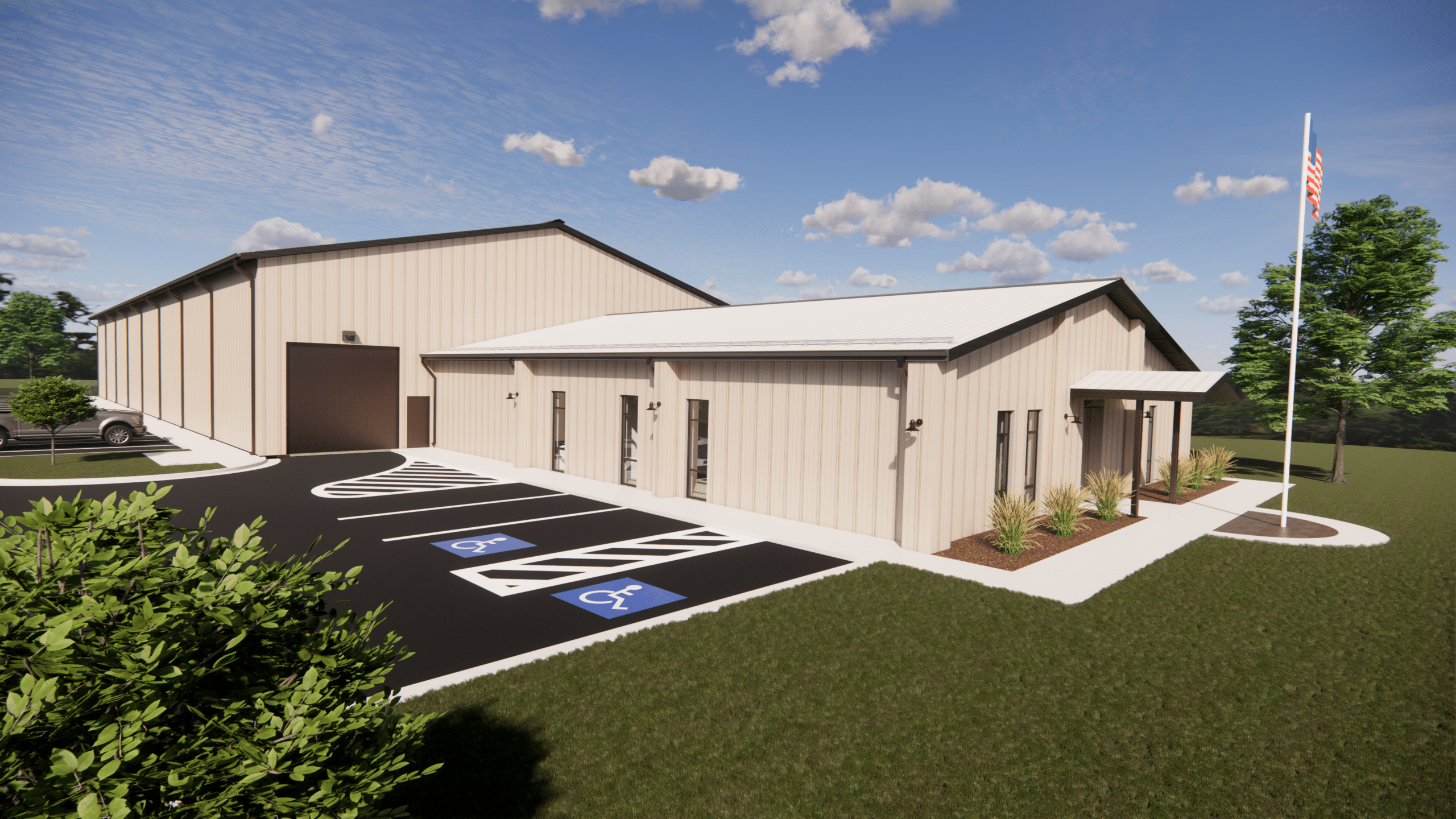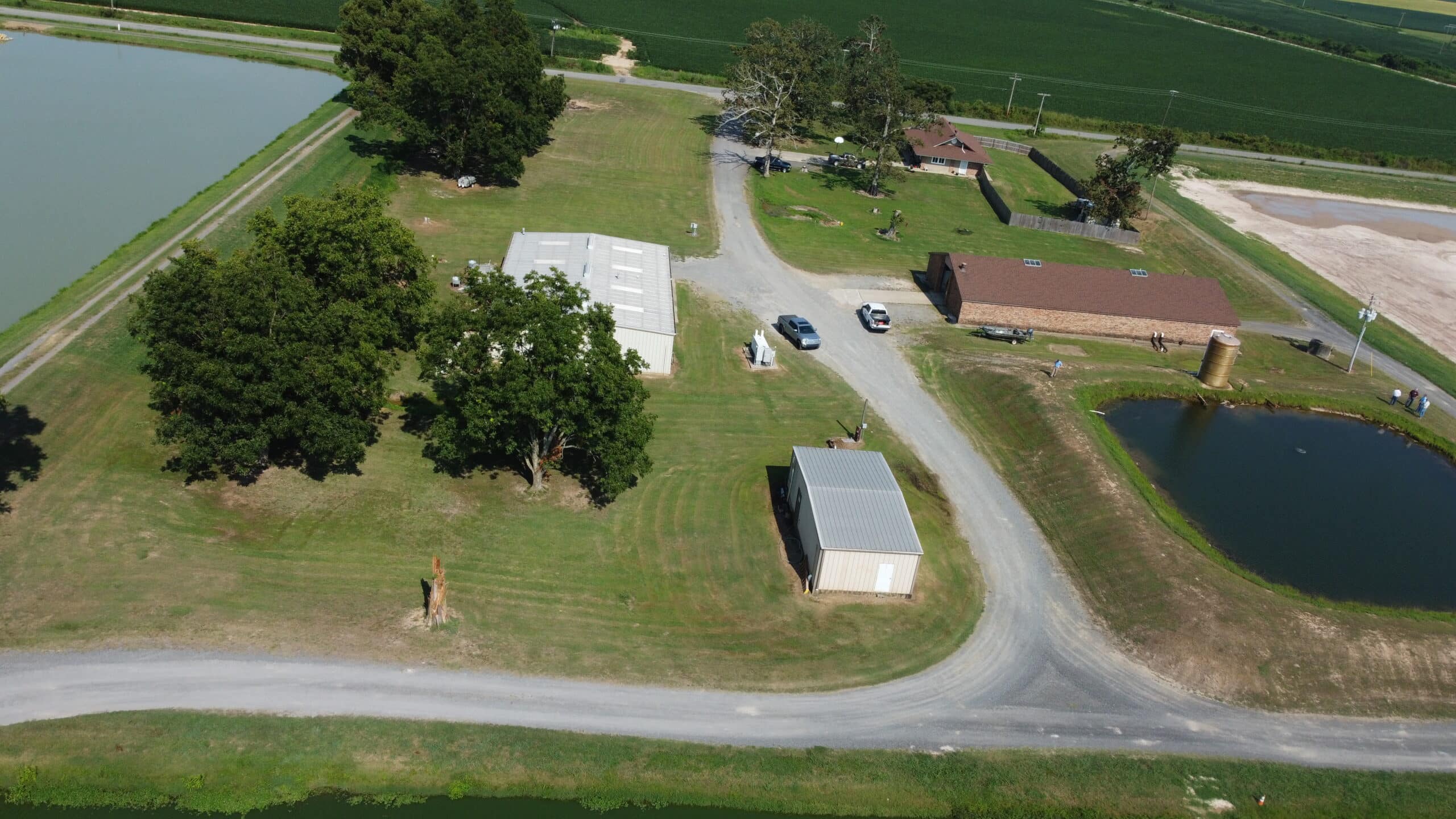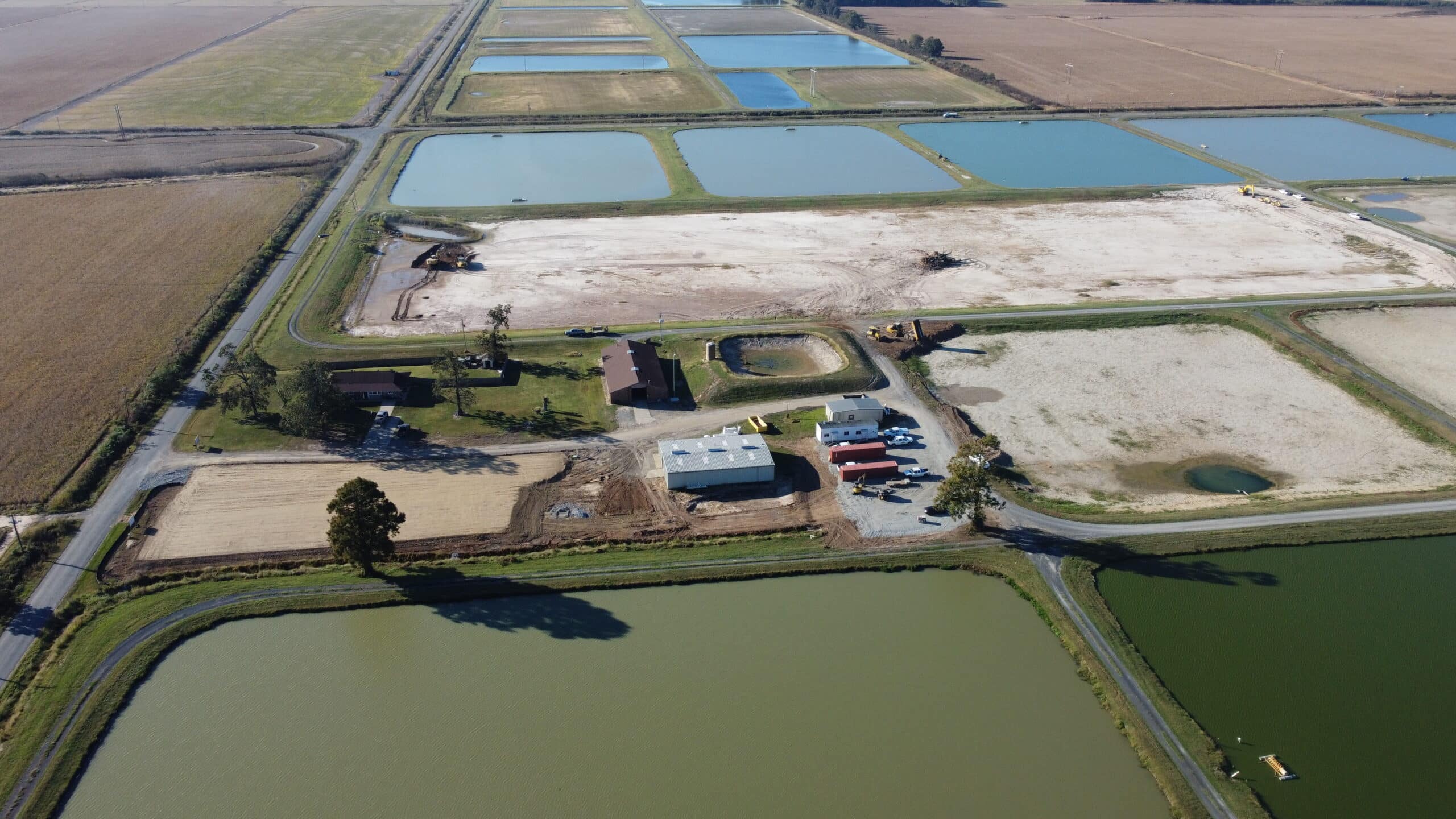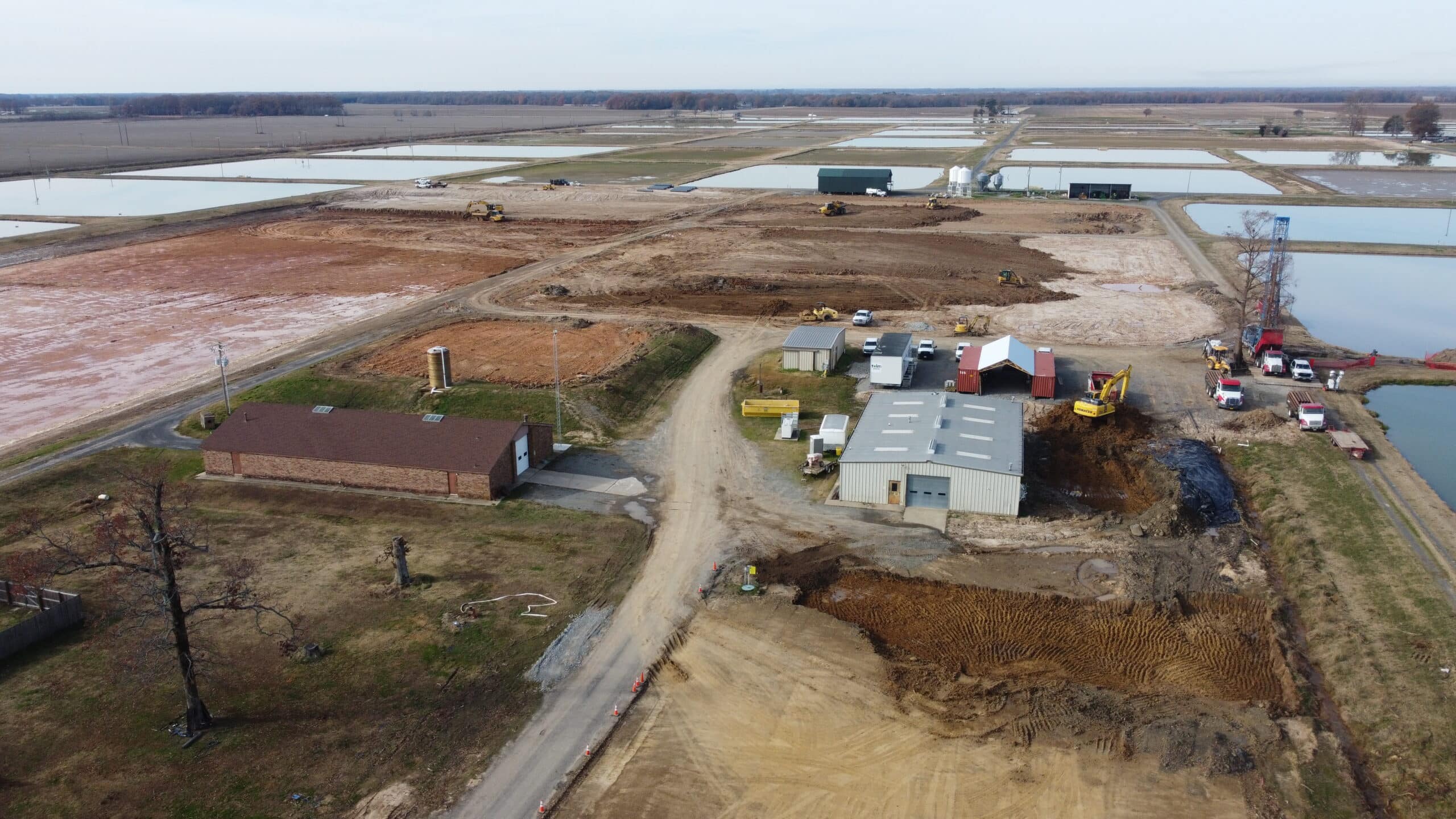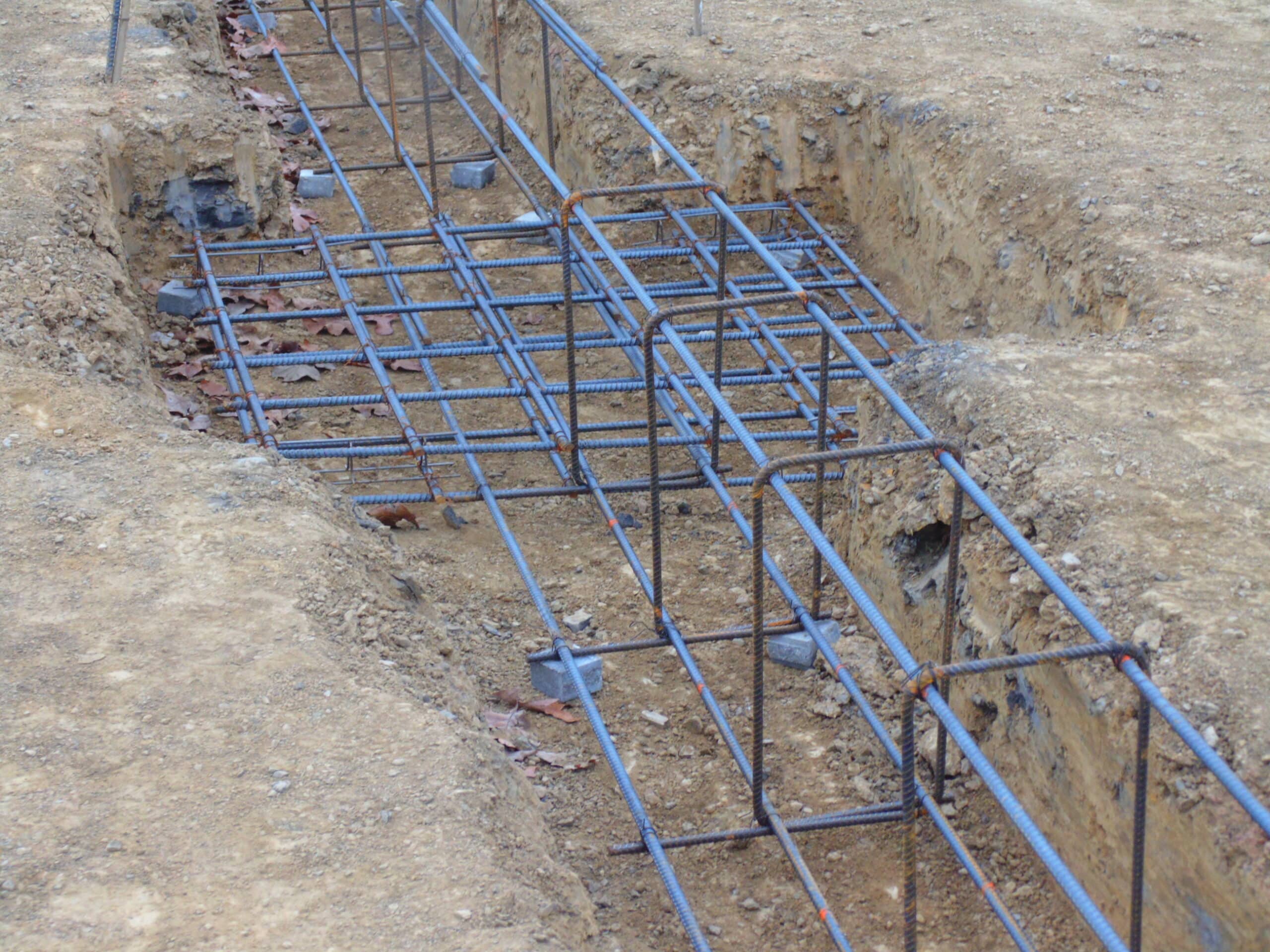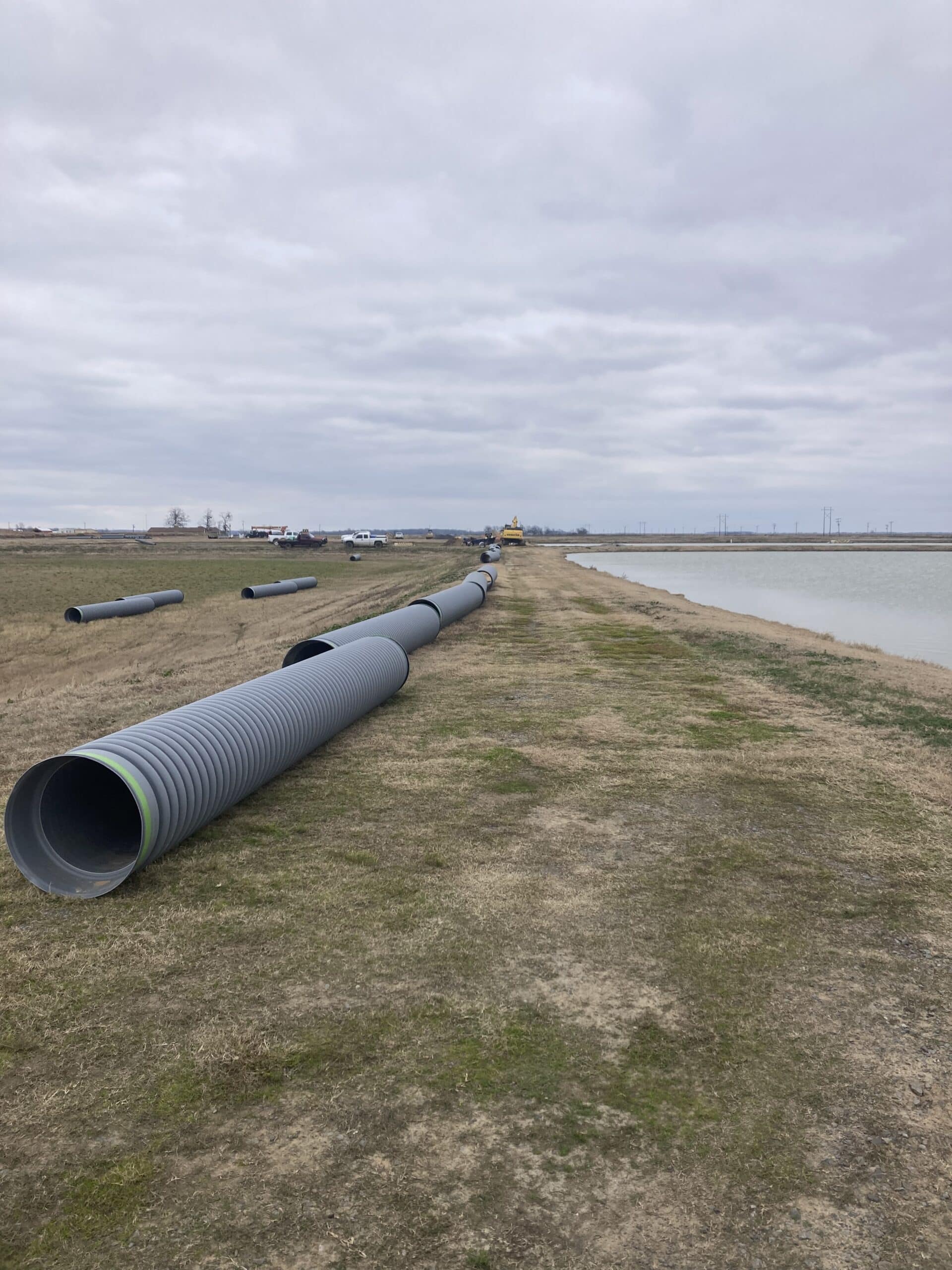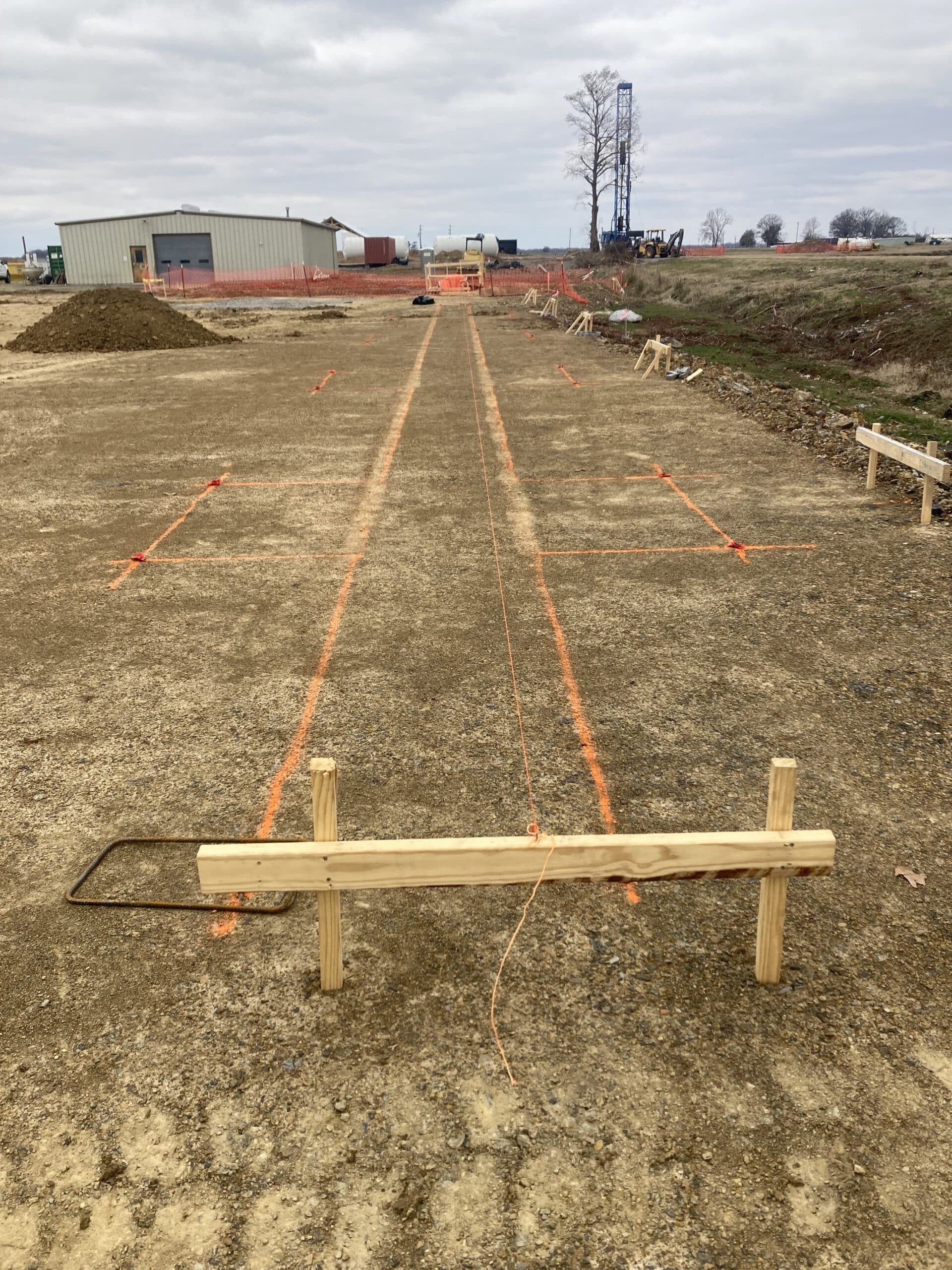Joe Hogan Fish Hatchery Project
Latest Joe Hogan Fish Hatchery Project Updates:
- On January 25, the excavation of the 12-acre holding pond was completed; this pond will be the main catalyst behind water retention and circulation efforts for the Hatchery. Now piping work has commenced to tie this structure into the rest of the farm. The contractor has also begun underground utility work for the hatchery building, as well as foundation work for this structure. A new well has been drilled to supply the facility with fresh water. The Agency is expecting erection work for the Hatchery building to begin in the next 6 weeks.
Joe Hogan Fish Hatchery Project Overview
After 95 years, Joe Hogan State Fish Hatchery at Lonoke is well beyond the need for a facelift. Barely any cosmetic updates were made during the last half of the 20th century until Arkansas Game and Fish Commission staff began improving the efficiency of the farm’s many ponds.
As 2024 dawns, a leveled dirt pad on the east end of the property awaits the construction of a 19,000-square-foot building that will be the bright front door to the state’s oldest warmwater fish hatchery.
Commissioners at their October meeting approved up to $7 million for the newest phase of work on the hatchery. The project’s culmination is a long time coming.
“The design and engineering phase was a long process, I know that,” Jason Miller, the AGFC’s assistant chief for fish culture, said in late November. “It’s a big, complicated project with a lot of moving parts. There’re a lot of things going on.”
Tolm Group Inc. of Morrilton is the contractor. ETC Engineers & Architects Inc. produced the design to the AGFC staff’s requirements.
Miller, who was manager at Hogan hatchery from 2008 until his promotion in 2023 to assistant chief, has been guiding gradual improvements to the facility during the past nine years, and design and engineering plans have been underway since the spring of 2021. This biggest piece in the improvements, however – the spacious new building that will provide needed office space, and more efficient equipment and tanks for indoor fish production – required approval to use the agency’s cash reserves so it could be fully realized.
The target for the building’s completion is December of this year. Along with the new structure, a water reuse reservoir was being created as 2023 wound down, and dirt from that area was being shifted west on the property for a 2.5-acre parking lot next to the large pond (it was 6.5 acres until the parking lot was planned) that has been the site of events such as free fishing derbies every June. No longer will visitors have to park on the levees and walk several football fields in distance to participate in the popular event, nor will Miller or the hatchery staff have to serve as valets while missing out on mingling with the fishing public.
The new building will have offices for literally every person employed at the hatchery. Miller, whose job now takes him all over the state, plans to keep an office in the old building off Fish Hatchery Road. He said plans for the office space considered room to house personnel who would run a “lunker” program, should the AGFC pursue that. Director Austin Booth has expressed interest in developing a program in Arkansas similar to other states’ efforts, like ShareLunker in Texas, where trophy bass harvested by anglers are donated to the agency turned in for prizes and used by the conservation agency to raise more “lunker” fish.
The AGFC bought two parcels of rice farmland totaling 276 acres, and the hatchery, built at a cost of about $17,000, opened in 1928. Dell Brown, who was supervisor at Mammoth Spring National Fish Hatchery, was named manager, with Joe Hogan, who had worked with the U.S Bureau of Fisheries, as his assistant during construction. Hogan became manager after the hatchery was completed and held the position until 1960, four years after the hatchery started bearing his name.
The hatchery opened with 24 1-acre ponds and gradually was built out by the early 1950s to more than 50 ponds covering 214 acres of surface water. After that, however, there were few changes or improvements in infrastructure. A couple of buildings, such as a ranch-style structure that houses concrete tanks, came online. The last hatch house was added in 1980.
The same paddle-wheel troughs for channel catfish production at Hogan have been in use for decades. They’re considered obsolete for the production of channel cats among conservation agencies and commercial operations. The new building will feature the latest technology: McDonald jars.
They take up a lot less room, they’re a lot less intrusive in terms of manpower,” Miller said. “With paddle-wheel troughs, somebody has to constantly work with catfish eggs until they hatch, a seven-day process. The (McDonald jars) will be pretty self-sufficient, once you put the eggs in there and have adequate flow, they just take care of themselves.”
The vast indoor space and better water temperature controls will allow the Hogan hatchery to be a wintering site for threadfin shad for other AGFC hatcheries.
A new well to groundwater was dug in November, and construction this year will add a water-treatment facility that will allow 90-95 percent of the water used in the building to be reused once it goes through the filtration system, Miller says.
Starting in 2014, the Hogan Hatchery staff, led by then-assistant manager Chad Wicker, spent seven years creating more ponds out of many of the larger, established ponds to make fish production more efficient. Eventually, they grew the pond total to 77 while reducing actual pond acreage to about 195. Also, they improved the way water flowed on the farm with the addition of underground pipes throughout, making their use of groundwater more efficient.
Before, Miller says, the hatchery used a single-pass system for water pumped from the aquifer. With the new water reuse reservoir and extensive piping, water will no longer be used one time and flushed out a ditch. The staff no longer will have to keep significant acreage of ponds empty just so another pond nearby can be drained. Every pond will have its own water supply, something unheard of in the first half-century of the hatchery’s life.
For several decades the AGFC leased other farms for hatchery efforts because of the way the 214 acres of water at Hogan were being used.
“Now, we’re managing much less acreage because of all the levees we’ve created in building the smaller ponds,” Miller said. “We’ve lost acres but we’re so much more efficient now than what we were. We’re raising a lot more fish now on fewer acres than what we were years ago.
“For the entire time that I’ve been here, (assistant hatchery manager) Chad Wicker and all my staff, we’ve always been looking at how do we modernize and renovate this particular hatchery. I’ve said this to Austin (Booth), we’re always trying to prepare this place for the next 100 years because we’re coming up on 100 years, I mean, soon. We’re at Year 95 right now as far as stocking fish from this facility. So, 95 years is a hell of a long time.”
He says that about 68 percent of the hatchery’s ponds will be able to drain to the new surface water reservoir.
“And then we’ll use this surface-water source for any of the ponds on the farm. We’ve greatly reduced the amount of groundwater that we’re going to have to rely on, which I think is important for this facility moving forward. We don’t really know what groundwater supplies are going to be like 20, 30, 40 years from no, but we want to be providing a more sustainable water source going forward.”
The fish culture units in the new facility will have three water sources: groundwater that will be pumped into a tank; heated, reused water; and chilled, reused water. The Hogan hatchery can raise a large variety of fish, from black bass to bluegill, redear, shad, catfish and even cool water species, such as walleye.
Ten of the new 5,000-gallon concrete vats planned will be 50 feet long for spawning Florida largemouth bass indoors “so we’ll be able to control everything,” Miller said. “Right now, the entire culture section that we have relies on spawning Florida largemouth bass and northern largemouth bass outside. So, if we get a cold front, or Mother Nature does anything, we’re at her mercy.
“Here we’ll be able to control temperature and photoperiod so we can have a lot more say-so on when our Florida bass are going to spawn and how efficient we are at it. This is going to be really, really key for us.”
He estimates doubling and even tripling the spawning capabilities for Florida bass in the new facility.
“Now, whether we have the broodstock and the pond space to do that, I don’t know, but the capabilities to do it are all going to be here. … This building will give us the capabilities to do really anything we want to do.”
Channel catfish production also will become more efficient. To raise 2 million-3 million catfish now at Hogan would require two different projects by the staff collecting eggs at separate times. The setup of the new facility will allow staff to produce up to 3 million catfish fry in half the time and with less manpower.
Moving fish through the facility will be enhanced by a system of hoists, adding to the efficiency for staff and the number of fish that will survive during moves from the building to ponds to hatchery trucks and across the state.
“The majority of the ($7 million) cost is this particular building, but a lot goes into getting water to this building, filtering the water, and then getting the water to the water reuse pond and then moving it back to the other ponds,” Miller said. “It’s a big project.”
Older buildings at the hatchery were incorporated into the overall design. The AGFC’s Education Division has a big role at the Hogan hatchery. Fish used in the AGFC’s mobile aquarium are housed at the hatchery, and the vat space for those fish will jump significantly.
Current Site Progress
Artist Rendition of the Completed Hatchery
